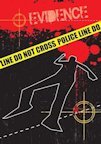The Violence Policy Center has just released its latest report that covers shootings by concealed-carry licensees since 2007. And while it’s impossible to come up with any kind of comprehensive number that tells us how many times legally-armed citizens yank out a piece and shoot themselves or someone else, the bottom line is that this project is a welcome antidote to the NRA-inspired nonsense about how people walking around with guns protect us from violence and crime.
If it were just the case that the pro-gun gang used the armed citizen la-la to sell more guns, it certainly wouldn’t upset me very much. After all, every legal product deserves a good marketing scheme, even if it’s a scheme developed out of whole cloth. But this year the virtue of an armed citizenry has been elevated to a new, almost sanctified level by the entire field of Republican Presidential candidates who are using the ‘more guns = less crime’ argument to make sure that sensible reforms like expanded background checks never get discussed at all. “New laws won’t do anything at all,“ Donald Shlump tells us, while he preens about having a concealed-gun permit even though he won’t reveal if he actually carries or ever practices shooting a gun.
 According to the VPC report, at least 763 people have been shot to death by legally-armed citizens over the last eight years. Now this is a pretty puny number when compared to the millions of crimes that are allegedly prevented because so many people are walking around with guns. But if you think we have no idea about the accuracy of the VPC data, let me hasten to assure you that the pro-gun gang bases their claims about the value of an armed citizenry on no data at all. The only thing they can point to is the 1994 article by Gary Kleck which has been discredited so many times that even the criticisms are getting a little stale. And when Kleck went online earlier this year to defend his numbers, he backed away from his original claims.
According to the VPC report, at least 763 people have been shot to death by legally-armed citizens over the last eight years. Now this is a pretty puny number when compared to the millions of crimes that are allegedly prevented because so many people are walking around with guns. But if you think we have no idea about the accuracy of the VPC data, let me hasten to assure you that the pro-gun gang bases their claims about the value of an armed citizenry on no data at all. The only thing they can point to is the 1994 article by Gary Kleck which has been discredited so many times that even the criticisms are getting a little stale. And when Kleck went online earlier this year to defend his numbers, he backed away from his original claims.
Now you would think that if a national political party has designated concealed-carry as its wedge issue in a Presidential year, the least they would do is conduct a survey to see if what they are claiming is really true. If it turns out that the Kleck research is as bogus as I suspect, they just don’t have to tell anyone about a new poll. On the other hand, were Kleck or someone else to do an updated study which shows that concealed-carry really was an effective and efficient way to defend against crime, just imagine what this would do for the Republicans if this information was injected into the Presidential campaign. After all, the Democrats have clearly decided to use gun control as their wedge issue in the coming months, so all the more reason why the Republicans should try to outflank the opposition by proving once and for all that being armed is a good thing.
There’s only one little problem. Armed citizens don’t protect us from crime. And the reason is because crime and concealed-carry have nothing to do with each other. Has there been a significant increase in CCW over the last few years? Yes. Do all these new CCW-holders live in localities where most crime occurs? No. The increase in concealed-carry applications has been most noticeable in places where legal gun-owners live which are, for the most part, white, small-town or smaller city localities – places where very little violent crime ever takes place.
In defending the recent spate of Republican gun-nuttery, the half-baked intellectual Thomas Sowell insisted it was reasonable to own a 30-shot rifle magazine in order to repel home invasions by three or more thugs. Sowell might qualify his remarkable flight from reality by looking at what the BJS says are the odds of such events happening in neighborhoods where people own guns. The odds are zero to none.





Recent Comments